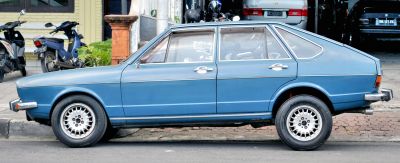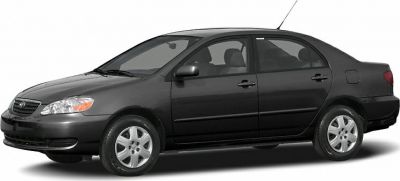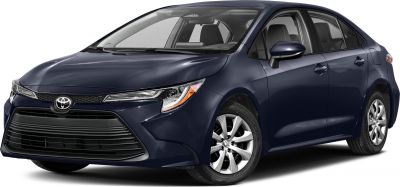 1982 Opel Ascona C Dimensions, Size & Specs
1982 Opel Ascona C Dimensions, Size & SpecsMeasurements of the 1982 Opel Ascona C, engineered for optimal performance and comfort
| Dimensions | |
|---|---|
| Length: | 4366 mm171.9 in14.3 ft |
| Width: | 1668 mm65.7 in5.5 ft |
| Height: | 1385-1395 mm54.5-54.9 in4.5-4.6 ft |
| Ground Clearance: | 130-148 mm5.1-5.8 in0.4-0.5 ft |
| Trunk Capacity: | 510 liter18.0 cu ft |
| Trunk Capacity (Max): | 510 liter18.0 cu ft |
| Weight Specifications | |
| Curb Weight: | 920-1095 kg2028-2414 lbs |
| Maximal permitted Weight: | 1420-1545 kg3131-3406 lbs |
| Tire Specifications | |
| Rims Sizes: | 14-inch rims:
|
| Tire Sizes: |
|
The Opel Ascona C is the third generation of the Ascona model, produced from 1981 until 1988, with model years starting in 1982. This generation features a classic sedan body style, designed to balance comfort, practicality, and efficient use of space. With a length of 4366 mm (171.9 inches), a width of 1668 mm (65.6 inches), and a height ranging between 1385 mm (54.5 inches) and 1395 mm (54.9 inches), the Ascona C offers a compact yet spacious footprint for its class. The ground clearance ranges from 130 mm (5.1 inches) to 148 mm (5.8 inches), providing adequate ride height for urban and suburban driving conditions. The curb weight of the Opel Ascona C varies from 920 kg (2028 lbs) to 1095 kg (2414 lbs), depending on the specific configuration and equipment level, while the maximum permissible weight reaches between 1420 kg (3130 lbs) and 1545 kg (3406 lbs). Luggage capacity stands at a generous 510 liters (18 cubic feet) even with the rear seats folded, highlighting the model’s focus on practicality and cargo space. The Ascona C uses rims sized 5.5J x 14 and 5.5J x 13 inches, paired with tire sizes of 195/60 R14 and 185/70 R13, ensuring balanced handling and ride comfort. Overall, the Opel Ascona C stands as a representative example of a well-sized mid-1980s European compact sedan, combining moderate dimensions and weight with practical interior space and luggage volume, making it a versatile choice for drivers seeking a functional and reliable family or commuter vehicle.
Discover the standout features that make the 1982 Opel Ascona C a leader in its class
Have a question? Please check our knowledgebase first.
The Opel Ascona C, produced from 1981 to 1988, measures 4366 mm (171.9 inches) in length, 1668 mm (65.7 inches) in width, and its height ranges between 1385 mm to 1395 mm (54.5 to 54.9 inches). These dimensions reflect a compact yet roomy sedan design common for the era, offering balanced proportions suitable for urban and suburban driving.
The curb weight of the Opel Ascona C ranges between 920 kg to 1095 kg (approximately 2,028 to 2,414 lbs), depending on specific trim and equipment levels. Its maximum permissible weight ranges from 1420 kg to 1545 kg (around 3,130 to 3,407 lbs). This weight distribution supports a robust yet efficient driving experience, striking a balance between performance and fuel economy.
The Opel Ascona C boasts a sizable luggage capacity of 510 liters (about 18 cubic feet), which remains consistent whether the rear seats are upright or folded down. This volume accommodates a reasonable amount of baggage for family trips or daily errands, reflecting clever space utilization in the sedan layout.
The ride height or ground clearance of the Opel Ascona C varies between 130 mm to 148 mm (5.1 to 5.8 inches), depending on suspension setup and tire choice. This moderate clearance offers a comfortable ride on typical road conditions while maintaining stability and minimizing the risk of undercarriage damage on uneven surfaces.
The Opel Ascona C typically came with rim sizes of 5.5J x 14 and 5.5J x 13 inches, accompanied by tire sizes of 195/60 R14 and 185/70 R13 respectively. These specifications provided a good balance of ride comfort, handling responsiveness, and tire availability, tailored to varying market needs and trim levels.
Yes, the Opel Ascona C can comfortably fit into a standard residential garage. With a length of 4366 mm (171.9 inches) and width of 1668 mm (65.7 inches), it fits well within typical garage dimensions, which generally exceed 5,000 mm (196.9 inches) in length and around 2,500 mm (98.4 inches) in width. Its moderate height further ensures clearance with garage doors and entryways.
Compared to the Opel Ascona B that preceded it, the Ascona C grew slightly in overall dimensions. While the Ascona B had a length close to 4225 mm (166.3 inches), the Ascona C extended to 4366 mm (171.9 inches), providing more cabin and luggage space. The width and height also saw incremental increases, enhancing passenger comfort and road presence. These dimensional enhancements marked a progression toward a more modern, family-oriented sedan.
The Opel Ascona C's dimensions and luggage capacity positioned it competitively among European compact sedans of the 1980s, such as the Ford Sierra and Volkswagen Jetta. Its length of 4366 mm (171.9 inches) and luggage capacity of 510 liters (18 cubic feet) were on par or better, especially in cargo space with seats folded. The relatively low curb weight (920 - 1095 kg) further provided an advantage in fuel efficiency and handling compared to some heavier rivals.
The height of the Opel Ascona C varies between 1385 mm to 1395 mm (54.5 to 54.9 inches), a slight difference attributable primarily to suspension tuning, tire dimensions, and optional equipment. For example, different trim levels with varied suspension setups or rim and tire combinations can alter ride height slightly, which in turn affects overall vehicle height.
During its production from 1981 to 1988, the Opel Ascona C was regarded as a practical choice due to its balanced size, spacious luggage room, and efficient weight. Its moderate dimensions made urban driving and parking manageable, while the 510 liters (18 cubic feet) of luggage capacity including folding rear seats provided family-friendly utility. The car's design also emphasized reliability and comfort, factors important to buyers in the compact sedan segment.
Discover similar sized cars.

| Production: | 1973-1980 |
|---|---|
| Model Year: | 1973 |
| Length: | 4290 mm168.9 in |
| Width: | 1615 mm63.6 in |
| Height: | 1359 mm53.5 in |

| Production: | 1982-1987 |
|---|---|
| Model Year: | 1982 |
| Length: | 4325 mm170.3 in |
| Width: | 1645 mm64.8 in |
| Height: | 1380 mm54.3 in |

| Production: | 2001-2012 |
|---|---|
| Model Year: | 2000 |
| Length: | 4330 mm170.5 in |
| Width: | 1650 mm65.0 in |
| Height: | 1402 mm55.2 in |

| Production: | 2001-2006 |
|---|---|
| Model Year: | 2002 |
| Length: | 4375 mm172.2 in |
| Width: | 1710 mm67.3 in |
| Height: | 1470 mm57.9 in |

| Production: | 2003-present |
|---|---|
| Model Year: | 2004 |
| Length: | 4410 mm173.6 in |
| Width: | 1720 mm67.7 in |
| Height: | 1460 mm57.5 in |

| Production: | 2014-2016 |
|---|---|
| Model Year: | 2014 |
| Length: | 4375 mm172.2 in |
| Width: | 1700 mm66.9 in |
| Height: | 1470 mm57.9 in |

| Production: | 2014-2017 |
|---|---|
| Model Year: | 2015 |
| Length: | 4390 mm172.8 in |
| Width: | 1927 mm75.9 in |
| Height: | 1467 mm57.8 in |

| Model Year: | 2017 |
|---|---|
| Length: | 4400 mm173.2 in |
| Width: | 1695 mm66.7 in |
| Height: | 1460-1485 mm57.5-58.5 in |
